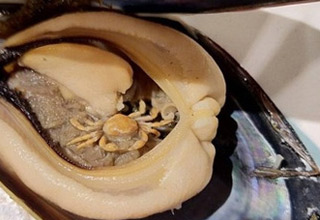
A couple weeks ago now, New York magazine managed to awaken a sleeping beast of once-bygone online discourse — reviving the bludgeoned-to-death debate on polyamorous relationships in its new cover story, “What Does A Polycule Actually Look Like?”
Largely focused on the ethically non-monogamous escapades of tech bro Nick, his wife Sarah and their seemingly very straight polycule, the roughly 4,000-word piece is a Portlandia-tinted fever dream. Sparks flying over Settlers of Catan. A meet-cute at “a Burning Man party.” Musings on seeking soul truths akin to Emma Watson’s opening monologue in The Bling Ring. A mountain of Google Spreadsheets (some stereotypes are very true!) and an unhinged sports analogy.
The new issue of @NYMag explores the world of ethical non-monogamy. The package includes a feature by @AllisonPDavis on one specific polycule, and offers poly-curious readers an in-depth guide to opening up their relationships. Read about the issue: https://t.co/Gf188nm2sV pic.twitter.com/Oi6oyvKbmg
— New York Magazine Communications (@nymagPR) January 16, 2024
“Some people like to run marathons. We like to do polyamory, complex relationship stuff,” explained Nick, whose name alongside that of everyone in his polycule had been changed. “Sarah’s favorite activity for the two of us to do is couples therapy. Navigating the relationship dynamics is kind of generally a fun thing for us. It’s like for relationship nerds.”
But more than ooh-ing and aah-ing at this equally milquetoast and millennial act of rebellion, several readers had an unexpected takeaway from the piece, dubbing polyamorous people as the Rick and Morty fans of sexual identity “Worst guy you know is about to have a framed print of this cover in his flat,” Twitter user @rebtool captioned the magazine’s cat-filled cover.
“we’re going to write about polyamory”
— ashley ray (@theashleyray) January 17, 2024
…okayyyy
“we found a white polycule”
…ehhhh fineeee i guess
“it’s one guy and two women”
oh no
“they live in new york city”
please shut it down
“Polyamory is like Atheism in that the activity is fine but the identity is awful,” read a viral post from @Liamjsm.
polyamory is like atheism in that the activity is fine but the identity is awful
— Sunk Cost Pharisee (@Liamjsm) January 17, 2024
“I never thought I’d say this, but the more polyamory gets discussed by the mainstream, the more I respect the swingers,” added friend of eBaum’s World Magdalene Taylor. “No philosophizing about the ethics of the lifestyle, no self-pitying about the identity, just couples who keep it simple and like to sleep with each other.”
I never thought I'd say this but the more polyamory gets discussed by the mainstream the more I respect the swingers. No philosophizing about the ethics of the lifestyle, no self-pitying about the identity, just couples who keep it simple and like to sleep with each other.
— Magdalene J. Taylor (@magdajtaylor) January 17, 2024
But it’s not just swingers who have mastered the art of fucking around without everyone finding out. There’s another group — a poly group no less — who inherently understand the dynamics of a relationship that involves multiple partners without having to scream it from the proverbial rooftops (read: Twitter or New York magazine): queer poly peeps.
After all, silence is an oft-unfortunate way of life for queer people like myself. Even with growing public support, being openly queer is a crapshoot at best. And discussing your romantic relationships, multiple partners, or god forbid, sex, beyond your close inner circle is a particularly dicey game, one that could end in verbal barrages or physical violence. In my case, it took my mother well over a decade to accept my queer identity, a process that still continues to be rife with invasive questions about my sex life, nasty comments about the women I date and the pity-strained refrain of “well, if that’s the kind of sex you want to have…”
And so, for better or worse, we’ve mastered the art of code-switching. Or to put it as bluntly as possible: There’s a reason why you know every last detail of Nick and Sarah’s polycule but have probably never heard of FLINTA dark rooms.
“If I wanted to hear this much about poly straight people I would still be teaching public speaking at Brown,” joked @pmckelveyphd on Twitter when the New York magazine story hit. More seriously — and even more on point — author @InstantSunrise added, “All I’m gonna say about the current poly discourse is that there’s a vast difference between straight polyamory and queer polyamory.”
Namely, to @InstantSunrise, straight poly people are defined by drama, deceit and jealousy, while the key hallmarks of queer polyamory is a lot more straightforward — “a friend group that fucks.”
Straight poly: A cishet couple trying to bail out a failing marriage by making it “okay” to have a fuck on the side. The husband doesn’t find anybody to be with him, the wife finds somebody almost immediately. Ends in divorce.
— Elizabeth, see pinned tweet ️️⚧️ (@InstantSunrise) January 18, 2024
Queer poly: a friend group that fucks.
They’re also quiet about it. And so, if we’re really talking about ethical polyamory, the most ethical thing poly straights like Nick and Sarah can do is shut the fuck up and keep all the details of their various relationships to themselves and their immediate inner circle. If nothing else, it’s the best way they can pay homage to the queer trailblazers who showed them that such a lifestyle was possible in the first place.






1 Comments